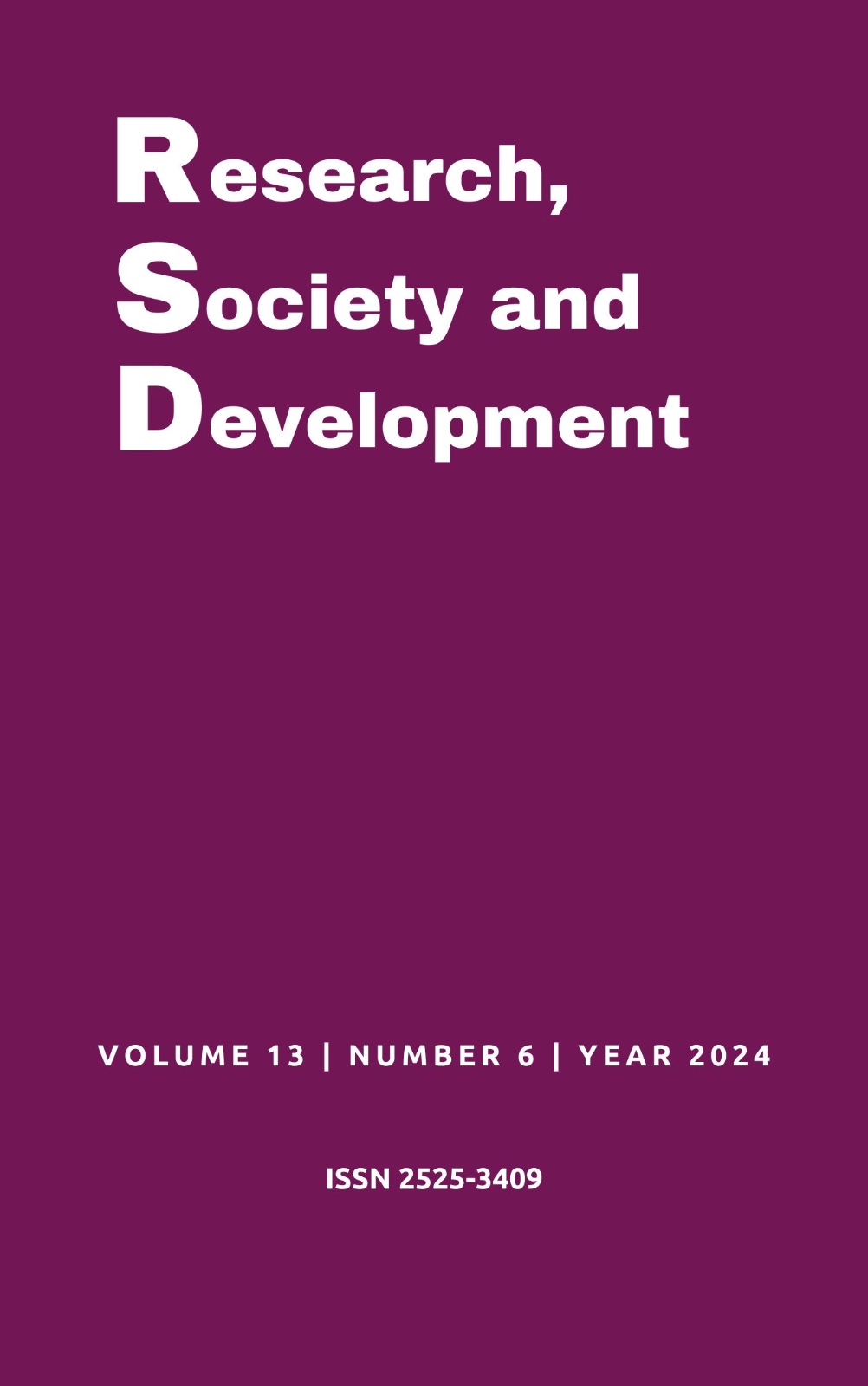Study on the impact of Mozart's Sonata K448 on the extinction of fear memory in relation to the environment in female mice without dysbiosis
DOI:
https://doi.org/10.33448/rsd-v13i6.46038Keywords:
Memory, Fear, Music therapy.Abstract
The fear memory is essential for survival, as is its extinction to avoid phobias and post-traumatic stress disorder. The objective of this article is to present results of an investigation into the interference of Mozart's Sonata K448 in the extinction of fear memory to a contextualized aversive environment in female mice. Methodology: for this purpose, 36 female mice of the C57BL/6J lineage were used and randomly divided in three groups: Mozart, Environment, and Control. The animals in the Mozart group were exposed to music from gestation to adulthood, while the other groups were only exposed to ambient sound. Behavioral procedures included music exposure, habituation, sound/shock conditioning training, extinction test, and recall test. Behavioral data were statistically analyzed. Results: the difference in freezing behavior between groups in the recall test (t(9)=0.874; p=0.405) was insignificant. The mean freezing percentage was 13.11% ± 2.26% for the Mozart group and 9.67% ± 3.37% for the Control group. Conclusion: from the results obtained, it’s possible to observe that female mice exposed to Mozart's Sonata K448 compared to the Control group showed no difference in the influence of music on the recall of fear memory. However, the limits of the "Mozart effect" are observed, highlighting the need to consider additional variables such as musical preference and experimental conditions when investigating the therapeutic effects of music.
References
Anjum, S. M. M., Käufer, C., Hopfengärtner, R., Waltl, I., Bröer, S., & Löscher ,W. (2018). Automated quantification of EEG spikes and spike clusters as a new read out in Theiler's virus mouse model of encephalitis-induced epilepsy. Epilepsy Behav. 2018,88:189-204.
Aoun P., Jones T., Shaw G. L., & Bodner M. (2005). Long-term enhancement of maze learning in mice via a generalized Mozart effect. Neurol Res.; 27(8): 791-6.
Baldi E., Costa A., Rani B., Passani M.B., Blandina P., & Romano A., et al. (2021). Oxytocin and fear memory extinction: Possible implications for the therapy of fear disorders? International Journal of Molecular Sciences, 22(18), 1-14.
Bellmund, J. L. S., Polti, I., & Doeller, C. F. (2020). Sequence Memory in the Hippocampal- Entorhinal Region. Journal of cognitive neuroscience. Jun. 12:2056-2070. DOI 10.1162/jocn_a_01592. Available from: https://pubmed.ncbi.nlm.nih.gov/32530378/.
Dalgalarrondo P. (2019). Psicopatologia e semiologia dos transtornos mentais. (3. ed.). [s.l]: Grupo A.
Gil, A. C. (2017). Como elaborar projetos de pesquisa. (6.ed.). Atlas.
Greenwood B. N., Strong P. V., Foley T. E., & Fleshner M. (2019). A behavioral analysis of the impact of voluntary physical activity on hippocampus-dependent contextual conditioning. Hippocampus. 19(10): 988-1001.
Hernando-Requejo V. (2018). Epilepsia, Mozart y su sonata K. 448: ¿es terapéutico el “efecto Mozart”? Rev Neurol. 2018;66(8):308-314.
Izquierdo I., Bevilaqua L. R. M., & Cammarota, M. (2006). A arte de esquecer. Estud av.; 20(58): 289- 296.
Izquierdo I., Myskiw J., Benetti F., & Furini, C. R. (2013). Memória: tipos e mecanismos – achados recentes. Rev. USP.; (98): 9-16.
Kaufmann D., & Brennan K. C. (2018). The Effects of Chronic Stress on Migraine. Relevant Phenotypes in Male Mice. Front Cell Neurosci., 12:294.
Mapurunga L. A., & Carvalho E. B. (2018). A Memória de Longo Prazo e a Análise Sobre sua Função no Processo de Aprendizagem. Rev. Ens. Educ. Cienc. Human. 19(1): 66-72.
Meng B., Zhu S., Li S., Zeng Q., & Mei B. (2009). Global view of the mechanisms of improved learning and memory capability in mice with music-exposure by microarray. Brain Research Bulletin. 28; 80(1-2):36-44.
Monsalve-Duarte S., Betancourt-Zapata W., Suarez-Cañon N., Maya R., Salgado-Vasco A., Prieto-Garces S. et al. (2022). Music therapy and music medicine interventions with adult burn patients: A systematic review and meta-analysis. 48, 510-521. Burns.
Mourão Júnior C. A., & Faria N. C. Memória. Memória. (2015). Processos Psicológicos Básicos. Oct-Dec; 28 (4);
Pauwels E. K. J., Volterrani D., Mariani G., & Kostkiewics M. (2014). Mozart, Music and Medicine. 23, 403-409. Medical Principles and Practice.
Pereira A. S. et al. (2018). Metodologia da pesquisa científica. [free e-book]. Santa Maria/RS. Ed. UAB/NTE/UFSM.
Rauscher F. H., Robinson K. D., & Jens J. J. (1998). Improved maze learning through early music exposure in rats. Neurol Res.; 20(5): 427–432.
Souza de Faria R., Bereta A. L. B., Reis G. H. T., Dos Santos L. B. B., Pereira M. D. S. G., Cortez P. O. et al. (2018). Effects of the swimming exercise on the extinction of fear memory in rats. J. Neurophysiology.; in press.
Tieppo G. M. de S., Reis G. G., & Picchiai D. (2016). Mozart, Rock e a Ativação da Criatividade. Revista de Administração Contemporânea. 20(3), 263-268.
Whittle N., Fadok J., MacPherson K. P., Nguyen R., Botta P., Wolff S.B.E., Muller C., Herry C., Tovote P., Holmes A., Singewald N., Luthi A., & Ciocchi S. (2021). Central amygdala micro-circuits mediate fear extinction. Nature Communications. Jul 06:12(1). Available from: https://pesquisa.bvsalud.org/portal/resource/pt/mdl-34230461
Downloads
Published
Issue
Section
License
Copyright (c) 2024 Ana Cláudia Marcelino da Silva; Clarissa Trzesniak; Maria Fernanda Moreira de Melo; Rodolfo Souza Faria

This work is licensed under a Creative Commons Attribution 4.0 International License.
Authors who publish with this journal agree to the following terms:
1) Authors retain copyright and grant the journal right of first publication with the work simultaneously licensed under a Creative Commons Attribution License that allows others to share the work with an acknowledgement of the work's authorship and initial publication in this journal.
2) Authors are able to enter into separate, additional contractual arrangements for the non-exclusive distribution of the journal's published version of the work (e.g., post it to an institutional repository or publish it in a book), with an acknowledgement of its initial publication in this journal.
3) Authors are permitted and encouraged to post their work online (e.g., in institutional repositories or on their website) prior to and during the submission process, as it can lead to productive exchanges, as well as earlier and greater citation of published work.


